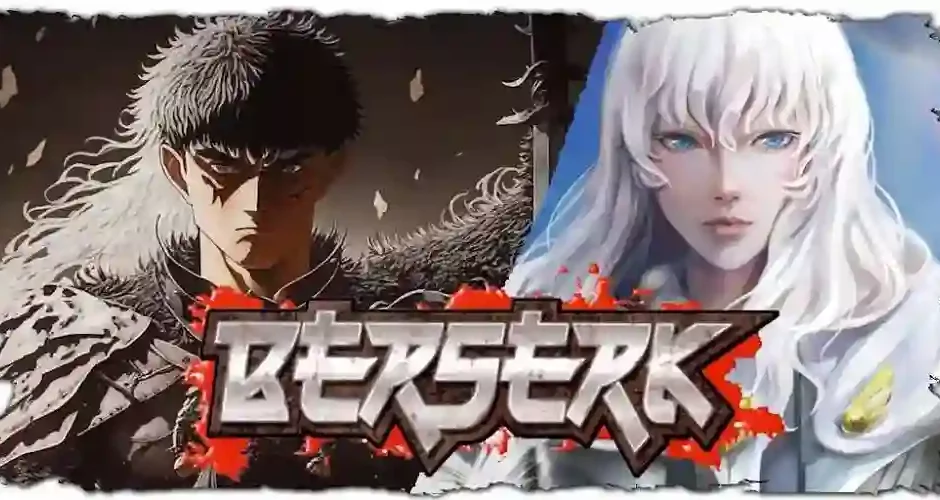In the world of manga and dark fantasy, few artists have left as indelible a mark as Kentaro Miura, the creator of Berserk. Beyond its compelling narrative and complex characters, Berserk stands as a testament to Miura’s unparalleled artistic prowess. In this article, we delve into the artistry of Berserk, exploring the masterful illustrations that have elevated the series to iconic status and captivated readers around the globe.
Evocative Atmosphere and Detailed World-Building:
One of the defining features of Miura’s art in Berserk is the ability to create an evocative atmosphere that immerses readers in the dark and treacherous world of the series. From the sprawling medieval landscapes to the haunting interiors of demonic realms, each panel is meticulously crafted to convey a sense of depth and authenticity.
Miura’s attention to detail in world-building is evident in the architecture, clothing, and weaponry, which draw inspiration from medieval and Renaissance aesthetics. The result is a visually stunning and immersive experience that transports readers into the grim and fantastical universe of Berserk.
Character Design and Expression:
Miura’s character design in Berserk is a testament to his ability to convey a wide range of emotions and personalities through visual storytelling. Each character is distinctively rendered, with intricately designed costumes and features that reflect their individual backgrounds and roles in the narrative.
The expressiveness of characters, from the tormented visage of Guts to the enigmatic allure of Griffith, adds depth to the emotional resonance of the series. Miura’s skill in portraying nuanced facial expressions and body language contributes to the complexity of the characters, making them relatable and compelling to readers.
Dynamic Action Sequences:
Berserk is renowned for its visceral and intense action sequences, and Miura’s dynamic illustrations play a pivotal role in bringing these scenes to life. Whether it’s a clash of swords, a ferocious battle against supernatural entities, or the acrobatics of Guts wielding the Dragonslayer, Miura’s command of motion and perspective creates a sense of kinetic energy that leaps off the page.
The use of dynamic angles, detailed choreography, and impactful page layouts contribute to the intensity of Berserk’s action sequences. Miura’s ability to convey the weight and force of each blow enhances the physicality of combat, making it an integral part of the visual storytelling.
Intricate Panel Composition:
Miura’s panel composition in Berserk is a masterclass in visual storytelling. Each page is meticulously laid out to guide the reader’s eye through the narrative, creating a seamless flow that enhances the pacing and impact of the story. Whether it’s a quiet character moment or a climactic battle, Miura’s thoughtful arrangement of panels contributes to the overall narrative tension and emotional impact.
The use of varied panel sizes and shapes adds a dynamic quality to the storytelling, allowing for moments of heightened intensity or introspection. Miura’s ability to balance intricate details with broader compositions showcases his understanding of the visual language of manga.
Symbolism and Iconography:
Miura employs symbolism and iconography to enrich the thematic depth of Berserk’s narrative. From the haunting Brand of Sacrifice to the enigmatic Behelit, these visual motifs become powerful symbols that resonate throughout the series. Miura’s meticulous rendering of these symbols adds layers of meaning, inviting readers to contemplate the broader themes of fate, sacrifice, and the supernatural.
The recurring visual motifs also contribute to the cohesion of the series, creating a visual language that unifies disparate elements of the narrative. The symbolism becomes a visual thread that connects different arcs and underscores the continuity of Berserk’s complex and interwoven storyline.
Evolution of Artistic Style:
Over the decades-long serialization of Berserk, Miura’s artistic style has undergone a notable evolution. From the early chapters, characterized by a more traditional manga aesthetic, to the later arcs featuring a more detailed and elaborate approach, Miura’s artistic growth is evident.
The evolution of the art mirrors the narrative progression of Berserk, with the series maturing in both content and presentation. Miura’s willingness to experiment with different artistic styles and techniques showcases his commitment to pushing the boundaries of visual storytelling.
Influence on the Manga and Dark Fantasy Genre:
Miura’s art in Berserk has not only defined the series but has also influenced the manga medium and the broader dark fantasy genre. The level of detail, expressiveness of characters, and dynamic action sequences set a standard that subsequent creators have sought to emulate. Berserk’s visual legacy can be seen in the works of artists who acknowledge Miura’s impact on their craft.
The influence extends beyond manga to other forms of media, with video games, anime, and art communities paying homage to Berserk’s distinctive aesthetic. The series has become a touchstone for artists and creators exploring the visual possibilities of dark fantasy storytelling.
Legacy and Remembrance:
The tragic passing of Kentaro Miura in 2021 cast a profound shadow over the world of manga, leaving fans and the industry mourning the loss of a visionary artist. As readers continue to explore the intricate and haunting world of Berserk, Miura’s art serves as a timeless testament to his creative genius.
The legacy of Berserk’s art endures as a cornerstone of manga history and a touchstone for the dark fantasy genre. Miura’s masterful illustrations, characterized by their atmospheric depth, expressive characters, and dynamic action, ensure that Berserk will be remembered not only for its compelling narrative but also for the unparalleled artistry that brought its world to life.



